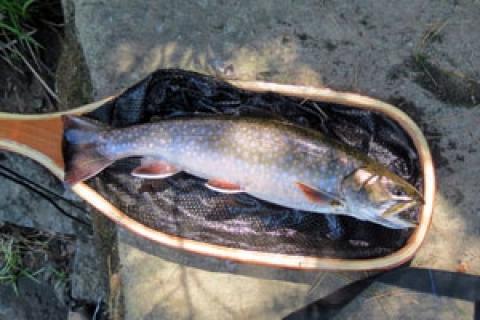
Last week I took the day off and spent some time at my favorite river. Previous experience told me the brook trout would be biting and, it being mid-week, I'd have the place to myself.
As it turned out, both predictions were true.

When I got there, a quick perusal of the water revealed a sporadic stonefly hatch was on. I considered the option of using a dry fly but quickly came to the conclusion that the swift conflicting currents of the four runs in front of me would probably be better fished with nymphs as it would allow me to methodically fish each run.
Less than three hours later, after landing 15 trout between 12 and 17 inches long, including a chunky 2-pound brookie, I stepped off the river, content that I had made the right decision.
While the fish were rising on occasion for those stoneflies, they were taking my black micro-bugger and size 16 pheasant tail nymph with the kind of reckless abandon that only brook trout can muster.
The secret was dredging bottom in that fast water. If my fly did not tick bottom, I rarely picked up a fish. But when it did, the fun began in earnest.
Getting a fly on bottom in 4 feet of fast water is not a delicate thing. It essentially means casting well upstream from where the target fish are and mending line so that the fly isn't dragged up and off bottom. Of course, split shot plays heavily (no pun intended) into this too.
I generally start with one or two about 18 inches above my fly. Then after a few casts I re-assess. If the fly hasn't tempted a bite or been delayed because it has caught up on a rock or some other obstacle on bottom, I add one more shot.
After, that, I cast a few more times and re-assess again, until I am sure my fly is contacting the bottom.
That's because in these fast waters, the fish typically rest on bottom in front of or behind rocks to avoid expending unnecessary energy. So, if your fly is not getting hung up on that bottom structure every now and again, you're probably fishing it way too high in the water column.
It's not pretty fishing. There are no long casts — more like short lobs upstream followed by one or more mends and a high stick to keep a drag-free, tight line.
This style of fishing certainly lacks the grace and elegance of dry fly fishing, but, most times, dredging bottom catches fish.
- 3195 views

